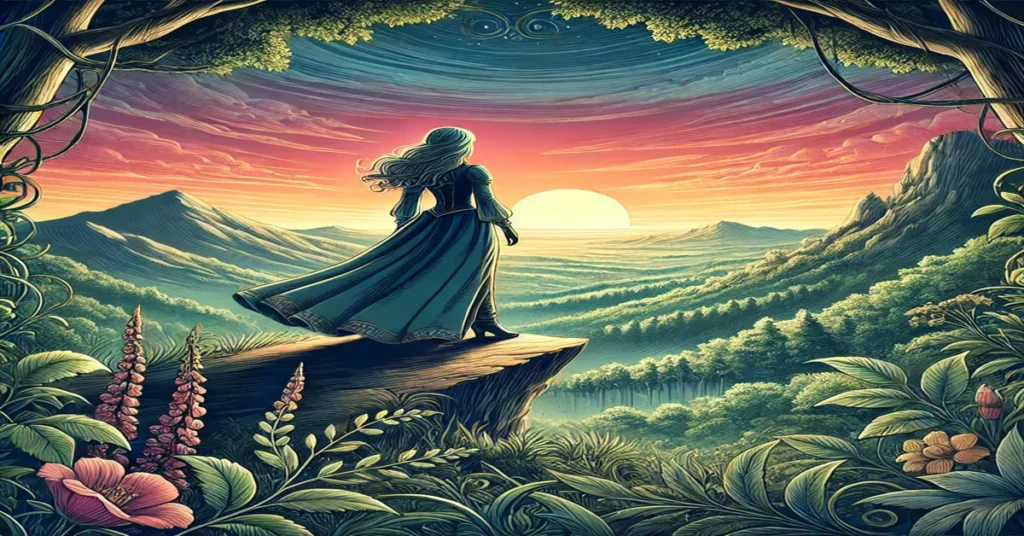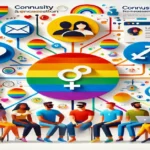Books have been the cornerstone of human culture for centuries, and stories often serve as powerful reflections of societal values, challenges, and transformations. One intriguing and deeply evocative genre that captures this essence is the “damsel” book. These stories center around the figure of a “damsel,” often depicted as a young woman in distress who becomes the focal point of trials, growth, and resolution. The term “damsel” evokes images of classical tales, romantic narratives, and modern re imaginings that challenge conventional gender roles. This article delves into the origins, evolution, key themes, and cultural significance of the “damsel” genre while spotlighting notable works and modern reinterpretations.
Origins of the Damsel in Literature
The concept of the “damsel book” can be traced back to ancient folklore and mythology. In classical literature, the archetype of the “damsel in distress” often symbolized purity, vulnerability, and the need for protection. Early examples include:
- Greek Mythology: Figures like Andromeda, who was rescued by Perseus, embody the trope of a vulnerable woman awaiting salvation. Her predicament was not merely about physical rescue but was tied to themes of sacrifice, societal expectations, and fate.
- Medieval Literature: The medieval period saw the trope solidified through chivalric romances such as The Legend of King Arthur and The Canterbury Tales. Knights and heroes often embarked on quests to save maidens, reinforcing ideals of honor, courage, and love.
- Fairy Tales: Stories like Sleeping Beauty and Rapunzel perpetuated the notion of passive damsels needing rescue, shaping cultural perceptions of gender roles for generations.
The Transition from Distress to Agency
The evolution of damsel-centric narratives reflects broader societal changes, especially regarding women’s roles in literature and real life. By examining the trajectory of these stories, we see an increasing emphasis on agency, independence, and empowerment.
Victorian Literature
In the 19th century, literature began to subtly challenge the passive damsel archetype. Authors like Jane Austen (Pride and Prejudice) and the Brontë sisters (Jane Eyre and Wuthering Heights) introduced complex female characters. These women were not merely waiting for rescue but actively shaped their destinies, even within constrained societal norms.
The Gothic Damsel
The Gothic genre offered a fascinating twist. While characters like Catherine Earnshaw in Wuthering Heights or Lucy Westenra in Dracula still faced peril, the atmospheric tension and dark themes allowed them to navigate their vulnerabilities with layered emotions and decisions.
Modernist and Postmodernist Approaches
In the 20th century, authors like Virginia Woolf and Sylvia Plath explored the inner lives of women, shifting the focus from external rescue to internal struggles and self-actualization. This marked a radical departure from traditional damsel narratives, emphasizing autonomy and introspection.
Themes in Damsel Books
1. Love and Sacrifice
Many damsel stories revolve around themes of love and sacrifice. While earlier works framed these in terms of romantic ideals, modern interpretations often examine the complexities of relationships and self-love.
2. Power Dynamics
The power imbalance between the damsel and her rescuer is a recurring motif. Contemporary works frequently subvert this by empowering the damsel to challenge or even rescue her savior.
3. Identity and Self-Discovery
Damsel books often serve as allegories for self-discovery. Whether it’s physical trials, emotional growth, or moral dilemmas, these narratives provide a framework for personal transformation.
4. Resilience
While early stories may have portrayed damsels as passive, modern narratives emphasize resilience. Characters navigate adversity with courage and resourcefulness, redefining what it means to be a “damsel.”
Notable Damsel Books Across Eras
Classic Works
- The Lady of Shalott by Alfred Lord Tennyson: A poignant portrayal of isolation and longing.
- Romeo and Juliet by William Shakespeare: Juliet, often seen as a damsel, subverts the trope with her active role in the narrative.
Gothic and Romantic Eras
- Rebecca by Daphne du Maurier: Blends vulnerability with strength as the unnamed protagonist uncovers dark secrets.
- Jane Eyre by Charlotte Brontë: A revolutionary work where the “damsel” is not just in distress but also an agent of change.
Modern Interpretations
- The Hunger Games by Suzanne Collins: Katniss Everdeen redefines the damsel trope, showcasing independence and leadership.
- A Court of Thorns and Roses by Sarah J. Maas: A fantasy series where the protagonist evolves from vulnerability to formidable power.
Feminist Retellings
- Circe by Madeline Miller: A retelling of Greek mythology from the perspective of a previously sidelined character.
- The Penelopiad by Margaret Atwood: Reimagines Penelope’s story from The Odyssey, giving her a voice.
The Cultural Impact of Damsel Narratives
Shaping Gender Perceptions
The damsel archetype has long influenced societal expectations of femininity. Early representations often perpetuated notions of dependency, beauty as virtue, and the ideal of the “male savior.” However, as literature evolved, so too did these narratives, reflecting and contributing to the feminist movement.
A Mirror for Societal Values
Damsel stories often act as mirrors, reflecting societal fears, desires, and transformations. For instance, Gothic damsels often symbolize the anxieties of a repressive society, while modern reinterpretations address issues like gender equality, mental health, and personal empowerment.
Inspiring Creativity
The archetype continues to inspire writers, filmmakers, and artists. From Disney’s modern princesses to independent films exploring nuanced female characters, the damsel remains a versatile figure.
Modern Critiques and Discussions
Deconstructing the Trope
Critics argue that traditional damsel narratives reinforce outdated gender roles. This has led to a wave of deconstructions, where authors and filmmakers challenge or invert the trope.
Inclusivity and Representation
Modern storytelling increasingly emphasizes diversity. Writers are reimagining damsel tales to include characters from varied cultural backgrounds, sexual orientations, and experiences, enriching the narrative landscape.
The Rise of Anti-Damsels
The anti-damsel—a character who deliberately subverts expectations—is a growing trend. Examples include Arya Stark from Game of Thrones or Lisbeth Salander from The Girl with the Dragon Tattoo.
Creating a Damsel Narrative Today
Crafting a damsel story for contemporary audiences involves blending traditional elements with modern sensibilities. Key considerations include:
- Character Depth: Focus on multi-dimensional characters with strengths, flaws, and motivations.
- Agency: Ensure the damsel is an active participant in her journey.
- Complex Relationships: Explore nuanced relationships that defy simple tropes.
- Cultural Sensitivity: Acknowledge and incorporate diverse perspectives and experiences.
Conclusion
The “damsel” book remains a rich and dynamic genre, offering a lens through which to examine humanity’s evolving understanding of identity, gender, and resilience. From ancient myths to contemporary re imaginings, these stories captivate readers by balancing timeless themes with modern innovation. Whether she is a figure of distress, empowerment, or transformation, the damsel continues to inspire, challenge, and redefine the boundaries of storytelling.
FAQs
1. What is a damsel book?
A damsel book centers around a female protagonist, often portrayed as vulnerable or in distress, who undergoes trials, growth, and resolution. These narratives can range from traditional tales of rescue to modern explorations of agency and empowerment.
2. How has the damsel trope evolved over time?
Originally depicted as passive and dependent, the damsel trope has evolved to include strong, independent characters who challenge societal norms and assert their agency.
3. What are some examples of modern damsel stories?
Examples include The Hunger Games by Suzanne Collins, A Court of Thorns and Roses by Sarah J. Maas, and Circe by Madeline Miller, all of which reimagine traditional narratives with empowered female protagonists.
4. Why is the damsel archetype important in literature?
The damsel archetype serves as a reflection of societal values, offering insights into gender roles, power dynamics, and cultural transformations across different eras.
5. How do feminist retellings of damsel stories differ from traditional ones?
Feminist retellings often focus on the damsel’s perspective, emphasizing her autonomy, voice, and ability to shape her destiny, rather than relying on external rescue.
6. What are some common themes in damsel books?
Common themes include love and sacrifice, identity and self-discovery, resilience, and power dynamics, all of which contribute to the character’s growth and the narrative’s depth.







